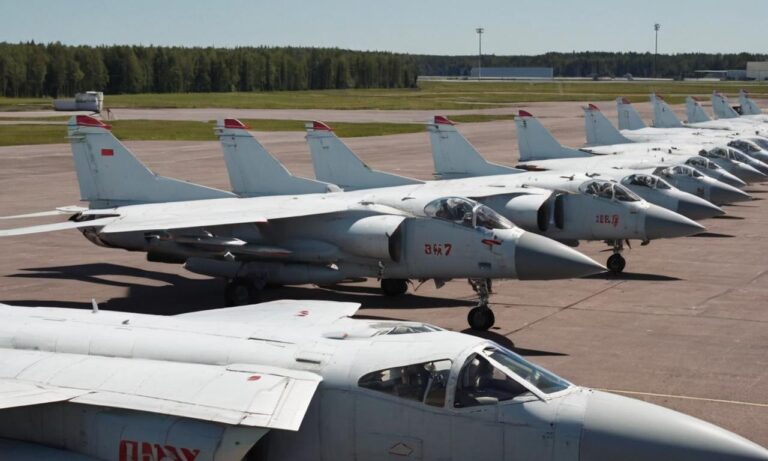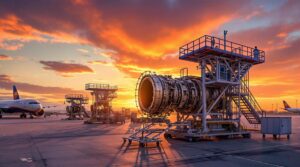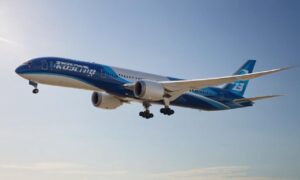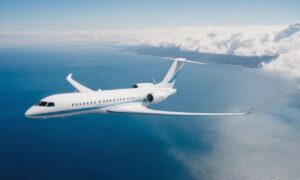Russia, a global powerhouse, boasts one of the largest and most formidable air forces in the world. The question on the number of aircraft in the Russian arsenal is a topic of great interest, given the country’s significant role in global geopolitics and military affairs.
The Russian Aerospace Forces, commonly known as the Russian Air Force, encompass a diverse array of aircraft, including fighter jets, bombers, transport planes, and reconnaissance aircraft. This formidable fleet is a result of Russia’s rich aviation history and its commitment to maintaining a robust defense capability.
The Fighter Jet Arsenal
At the forefront of Russia’s air power are its formidable fighter jets. The Russian Air Force operates a mix of modern and legacy aircraft, with renowned models like the Sukhoi Su-35 and the fifth-generation Su-57, showcasing advanced technology and capabilities. These aircraft play a crucial role in ensuring air superiority and protecting Russian airspace.
Bombers and Strategic Aviation
Russia’s strategic aviation capabilities include a fleet of strategic bombers designed for long-range missions. The iconic Tupolev Tu-160, also known as the “White Swan,” and the Tu-95 Bear are examples of powerful strategic bombers that contribute to Russia’s deterrent capabilities on the global stage.
Transport and Reconnaissance Aircraft
In addition to combat aircraft, Russia maintains a robust fleet of transport planes and reconnaissance aircraft. These assets are essential for both military operations and humanitarian missions, showcasing the versatility of the Russian Aerospace Forces.
Russia’s naval aviation complements its overall air power, with carrier-based aircraft serving a crucial role in maritime operations. The Admiral Kuznetsov aircraft carrier, despite being the sole carrier in the Russian fleet, enhances the country’s naval capabilities significantly.
The Importance of Helicopters
Helicopters play a vital role in Russia’s military strategy, providing close air support, transport, and reconnaissance capabilities. Models like the Mil Mi-24 and Mi-28 are integral components of the Russian helicopter fleet.
Continuous Modernization Efforts
Russia’s commitment to maintaining a formidable air force is evident in its ongoing efforts to modernize its aircraft fleet. The development and incorporation of advanced technologies ensure that Russian aviation remains at the cutting edge of military capabilities.
Global Impact and Geopolitical Significance
With a diverse and powerful air force, Russia asserts itself as a major player in global geopolitics. The strategic positioning of its air assets contributes to regional stability and influences international affairs.
In conclusion, the question of how many aircraft Russia has is complex and multifaceted. The Russian Aerospace Forces encompass a wide range of aircraft, each serving a specific purpose in the country’s defense strategy. The continuous modernization efforts and global impact make Russia’s air force a significant player on the world stage.
Frequently Asked Questions
Curious minds often seek answers to various questions regarding Russia’s air force. Here are some frequently asked questions to provide a more comprehensive understanding:
How Does Russia Maintain Its Air Superiority?
Russia’s air superiority is maintained through a combination of advanced technology, skilled pilots, and continuous modernization efforts. The deployment of cutting-edge fighter jets and strategic bombers contributes to a formidable defense capability.
What Role Do Transport Planes Play in Russian Military Operations?
Russian transport planes serve a vital role in military operations by facilitating troop movements, equipment transport, and humanitarian missions. Their versatility enhances the overall capabilities of the Russian Aerospace Forces.
Can Russia Project Power Globally with Its Air Force?
Yes, Russia can project power globally through its diverse air force capabilities. The strategic positioning of assets like the Tu-160 strategic bombers allows Russia to influence international affairs and contribute to global stability.
Technological Advancements in Russian Aircraft
Russia’s commitment to staying at the forefront of aviation technology is reflected in the continuous advancements made in its aircraft. From advanced avionics to stealth capabilities, Russian fighter jets and bombers incorporate cutting-edge features, showcasing the country’s prowess in aerospace innovation.
| Aircraft Type | Notable Technological Features |
|---|---|
| Sukhoi Su-57 | Stealth technology, advanced radar systems |
| Tupolev Tu-160 | Supersonic speed, long-range strategic capabilities |
| Mil Mi-28 | Modern avionics, enhanced maneuverability |
Russian Air Force in Humanitarian Missions
Beyond its military role, the Russian Aerospace Forces actively participate in humanitarian missions. Transport planes are deployed to deliver aid and support in times of crisis, showcasing the dual-purpose nature of Russia’s air capabilities.
Examples of Humanitarian Missions
- Delivery of medical supplies to disaster-stricken areas
- Evacuation of civilians from conflict zones
- Airlifting relief materials during natural disasters
Russia’s naval aviation extends its influence in regional maritime operations. Carrier-based aircraft, operating from the Admiral Kuznetsov, enhance Russia’s naval capabilities and contribute to the country’s influence in key strategic areas.






